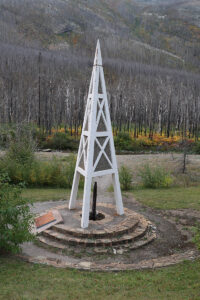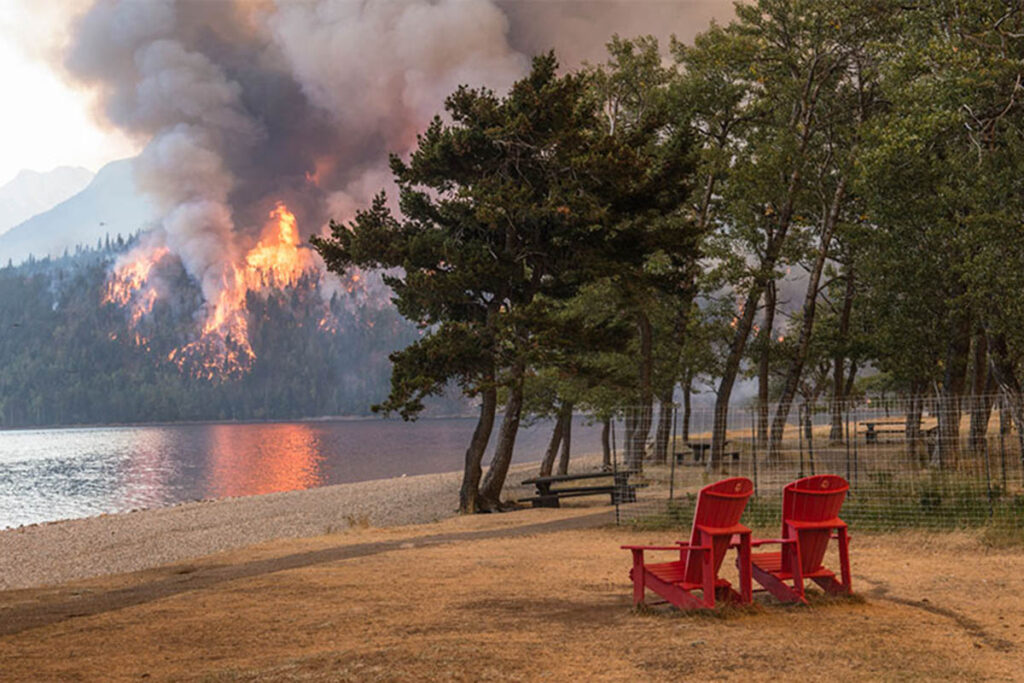Waterton Lakes National Park History
Evidence found within Waterton Lakes National Park suggests that human history began with the Kootenay people who lived west of Waterton Lakes National Park made trips across the Continental Divide 8,000 to 10,000 years ago to hunt bison on the plains and fish in the lakes. They camped in the valleys during winter, taking shelter from the harsh weather. But by about 1,500 years ago, they were spending more time in the west and crossing the mountains only a few times a year to hunt bison. By the 1700s, the Blackfoot—with the help of horses—had expanded their territory from the Battle River throughout southwestern Alberta. They patrolled the mountains on horseback, making it difficult for the Kootenay hunting parties to cross. But their dominance was short-lived. With the arrival of guns and the encroaching homesteads of early settlers, Blackfoot tribes retreated to the east, leaving the Waterton Lakes Valley uninhabited.
Oil City

Kootenai Brown, the valley’s first permanent settler, first noticed beads of oil floating on Cameron Creek. He and a business partner siphoned it from the water’s surface, bottled it, and sold it in Fort Macleod and Cardston. This discovery created much interest among the oil-starved entrepreneurs of Alberta, who formed the Rocky Mountain Development Company to do some exploratory drilling. At this stage the park was still a forest reserve; the trees were protected, but prospecting and mining were still allowed. A rough road was constructed through the Cameron Creek Valley, and in September 1901 the company struck oil at a depth of 311 metres (1,020 feet). It was the first producing oil well in western Canada and only the second in the country. In the resulting euphoria, a town site named Oil City was cleared and surveyed, a bunkhouse and dining hall were constructed, and the foundations for a hotel were laid. The boom was short-lived. Drilling rigs kept breaking down, and the flow of oil soon slowed to a trickle. A monument along the Akamina Parkway stands at the site of the well, and a little farther up the road at a roadside marker a trail leads through thick undergrowth to the town site. All that remains are the ill-fated hotel’s foundations and some depressions in the ground.
Waterton-Glacier International Peace Park
After becoming the valley’s first permanent resident in 1869, Kootenai Brown began promoting the beauty of the area to the people of Fort Macleod. One of his friends, local rancher F. W. Godsal, began lobbying the federal government to establish a reserve. In 1895 an area was set aside as a forest reserve. Shortly after Montana’s Glacier National Park was created in 1910, the Canadian government changed the name of the reserve to Waterton Lakes Dominion Park; it was later redesignated as a national park. Many people followed in the footsteps of Kootenai Brown, and a small town named Waterton grew up on the Cameron Creek delta. The town had no rail link, so unlike Banff and Jasper—its famous mountain neighbors to the north—it didn’t draw large crowds of tourists. Nevertheless, it soon became a popular summer retreat with a hotel, restaurant, and dance hall. The Great Northern Railway decided to operate a bus service from its Montana rail line to Jasper, with a stop at Waterton. This led to the construction of the Prince of Wales Hotel.
Boat cruises from the hotel across the international boundary were soon the park’s most popular activity. This brought the two parks closer together, and in 1932, after much lobbying from Rotary International members on both sides of the border, the Canadian and U.S. governments agreed to establish Waterton-Glacier International Peace Park, the first of its kind in the world. The parks are administered separately but cooperate in preserving this pristine mountain wilderness through wildlife management, search-and-rescue operations, and interpretive programs. Peace Park celebrations take place each year, and the Peace Park Pavilion by the lake is dedicated to this unique bond. In 1979, UNESCO declared the park a Biosphere Reserve, only the second such reserve in Canada. In 1995 Waterton Lakes National Park’s importance was further recognized when UNESCO declared Waterton-Glacier International Peace Park a World Heritage Site.
2017 Kenow Wildfire
In 2017, the Kenow wildfire burnt almost half of Waterton Lakes National Park, impacting 80% of its trail system, damaging the integrity of roadways, and destroying infrastructure such as the visitor centre and Crandell Mountain Campground. In the ensuing years, although regeneration of the landscape has only just begun, work on repairing infrastructure is almost complete.

Kenow wildfire from Upper Waterton Lake CREDIT: Parks Canada.
